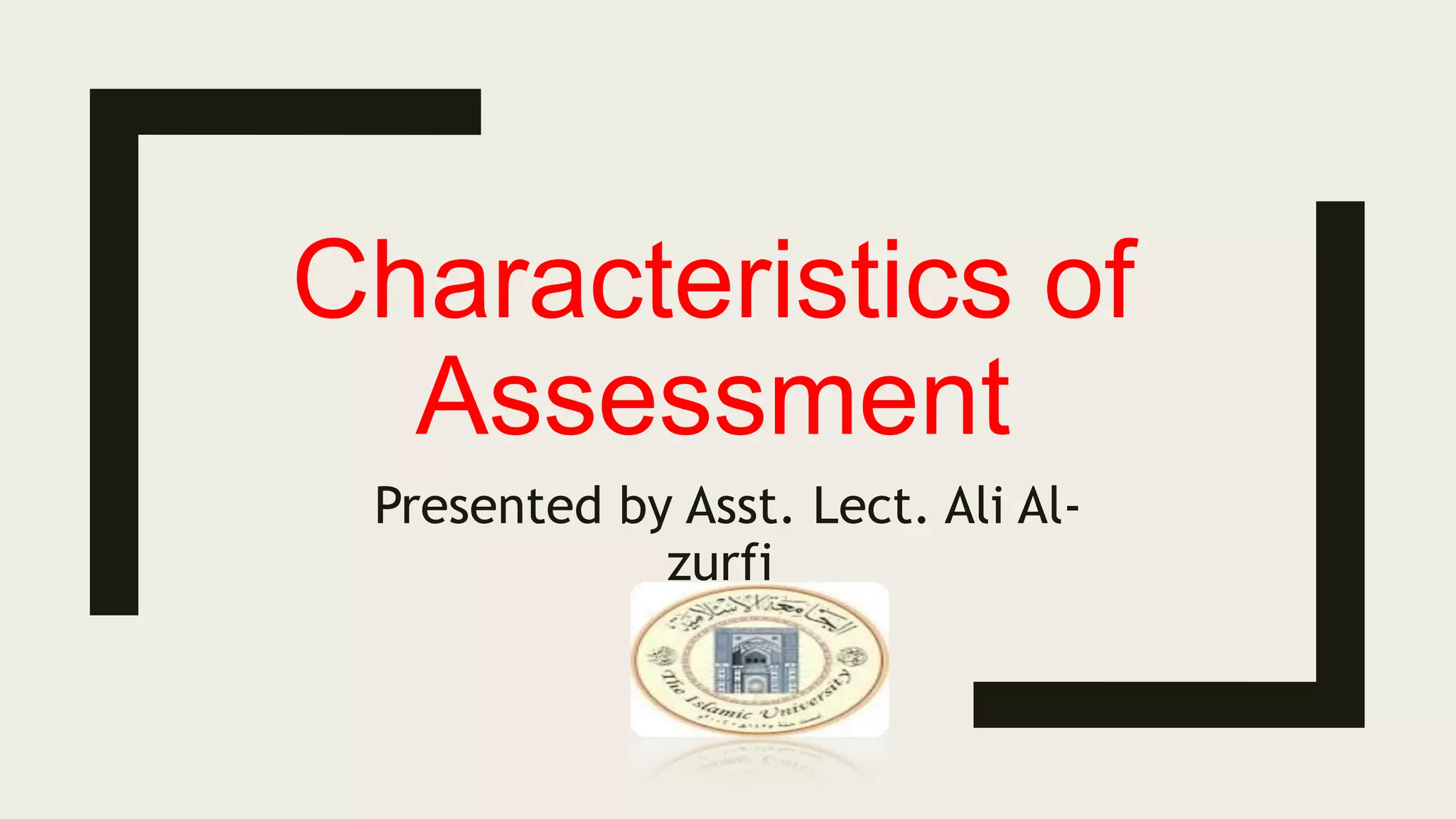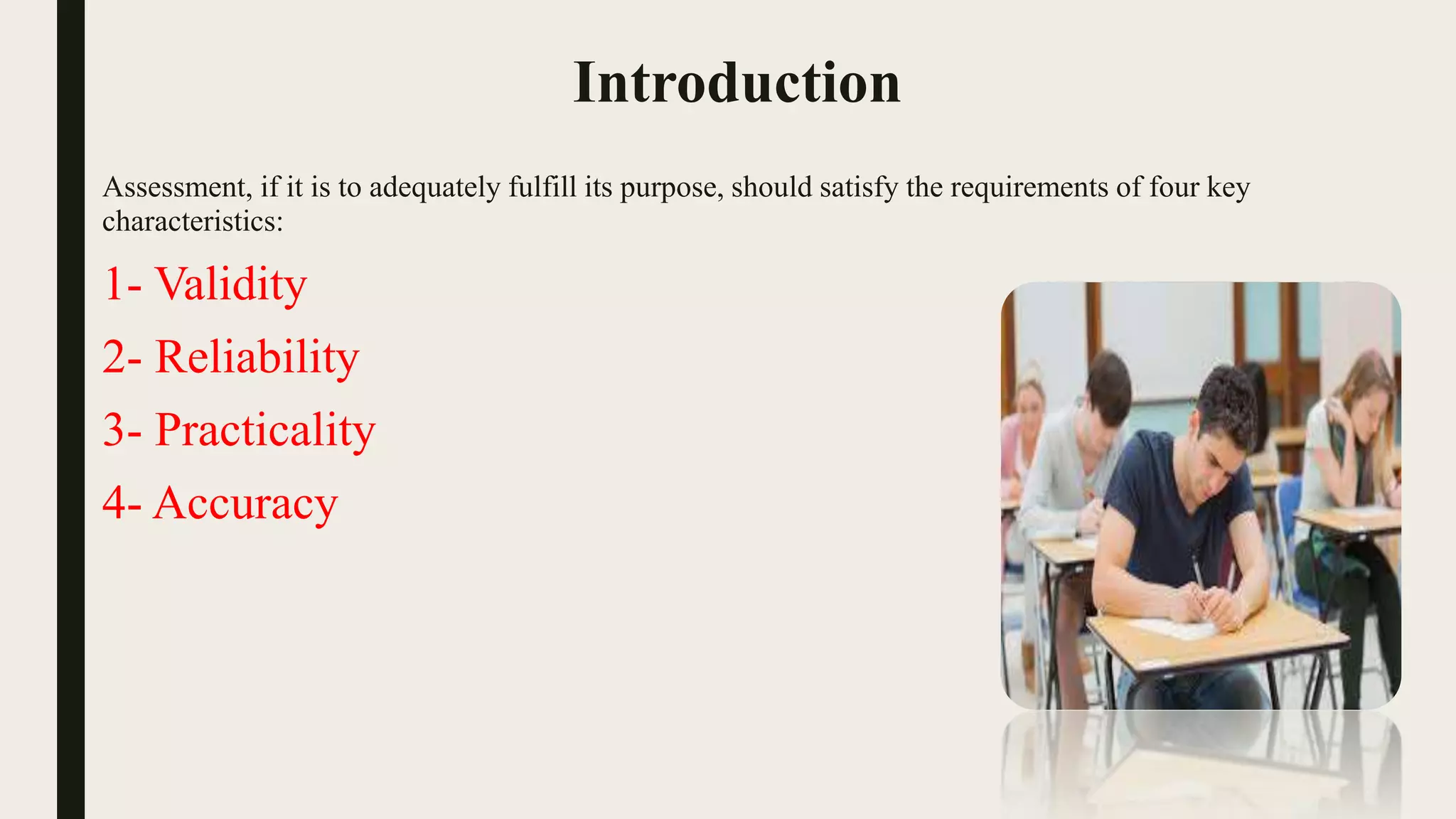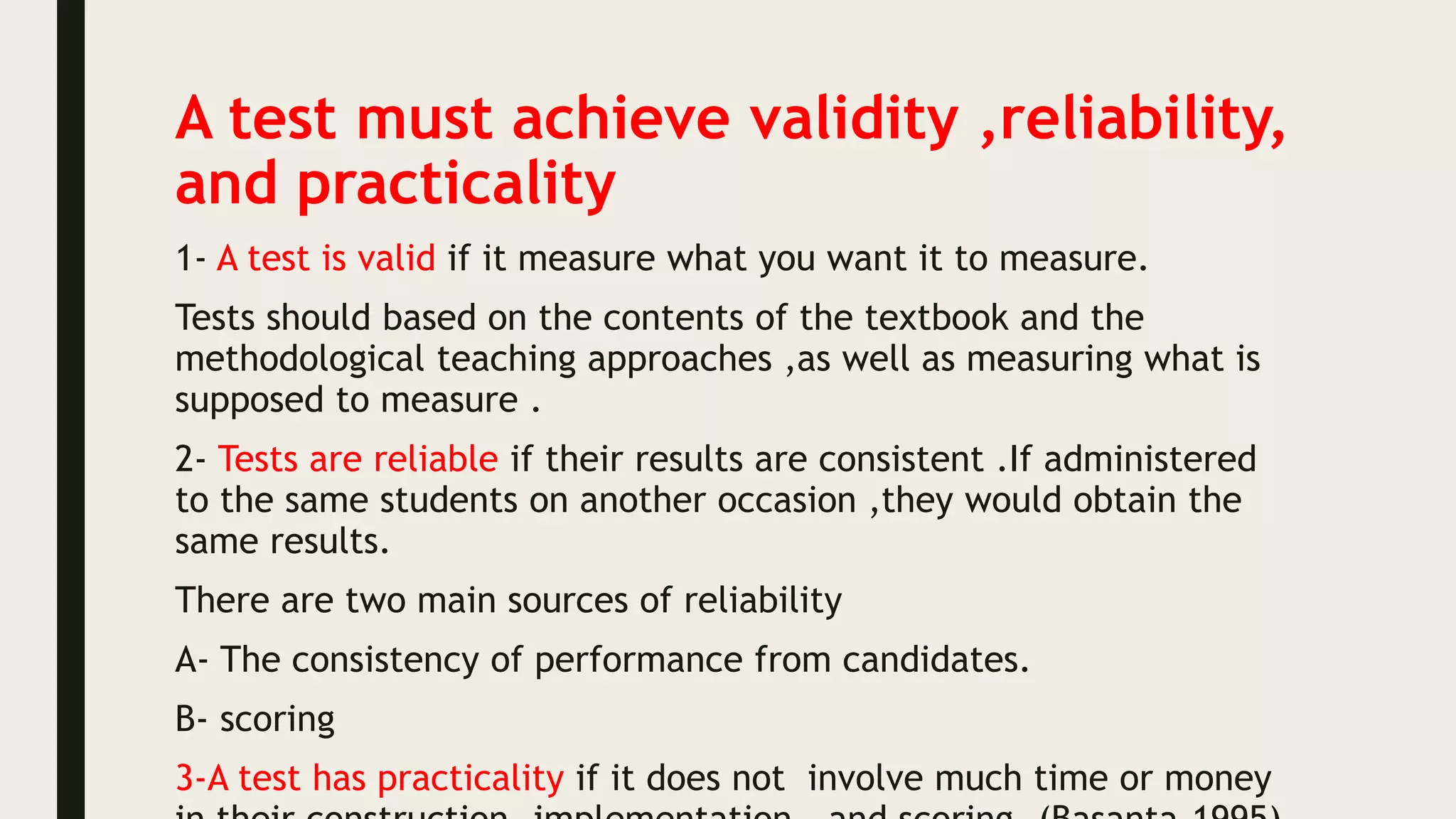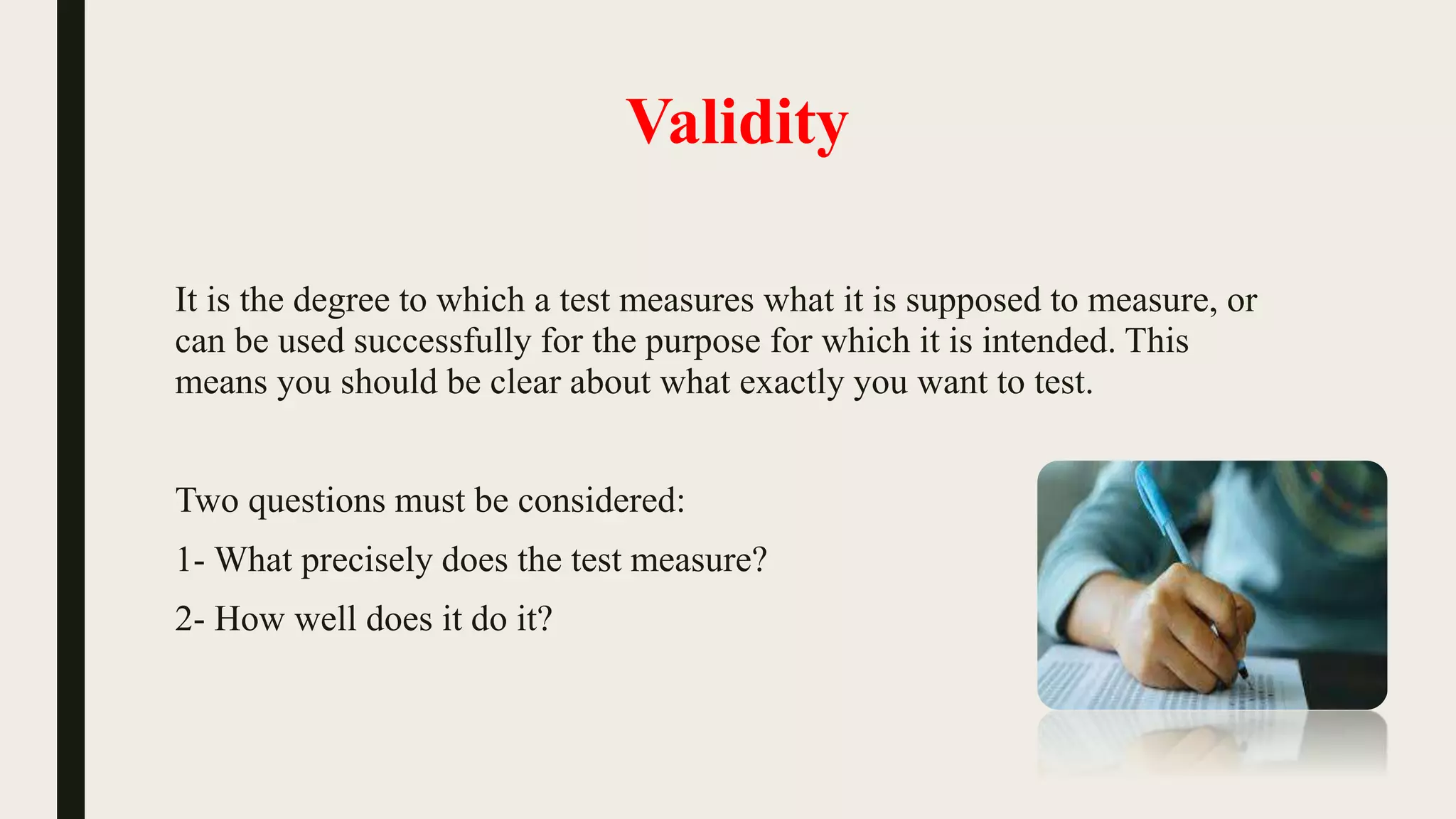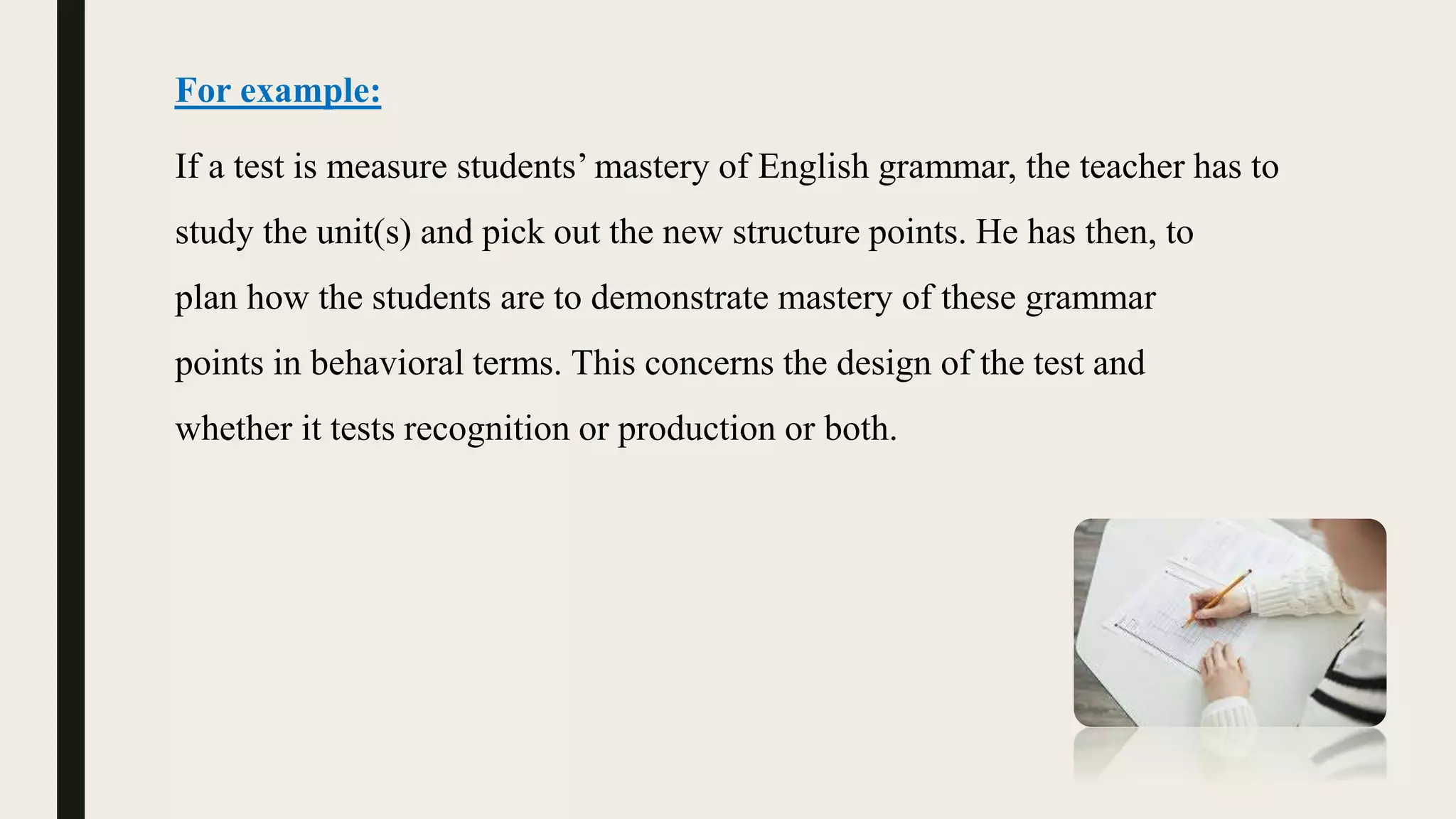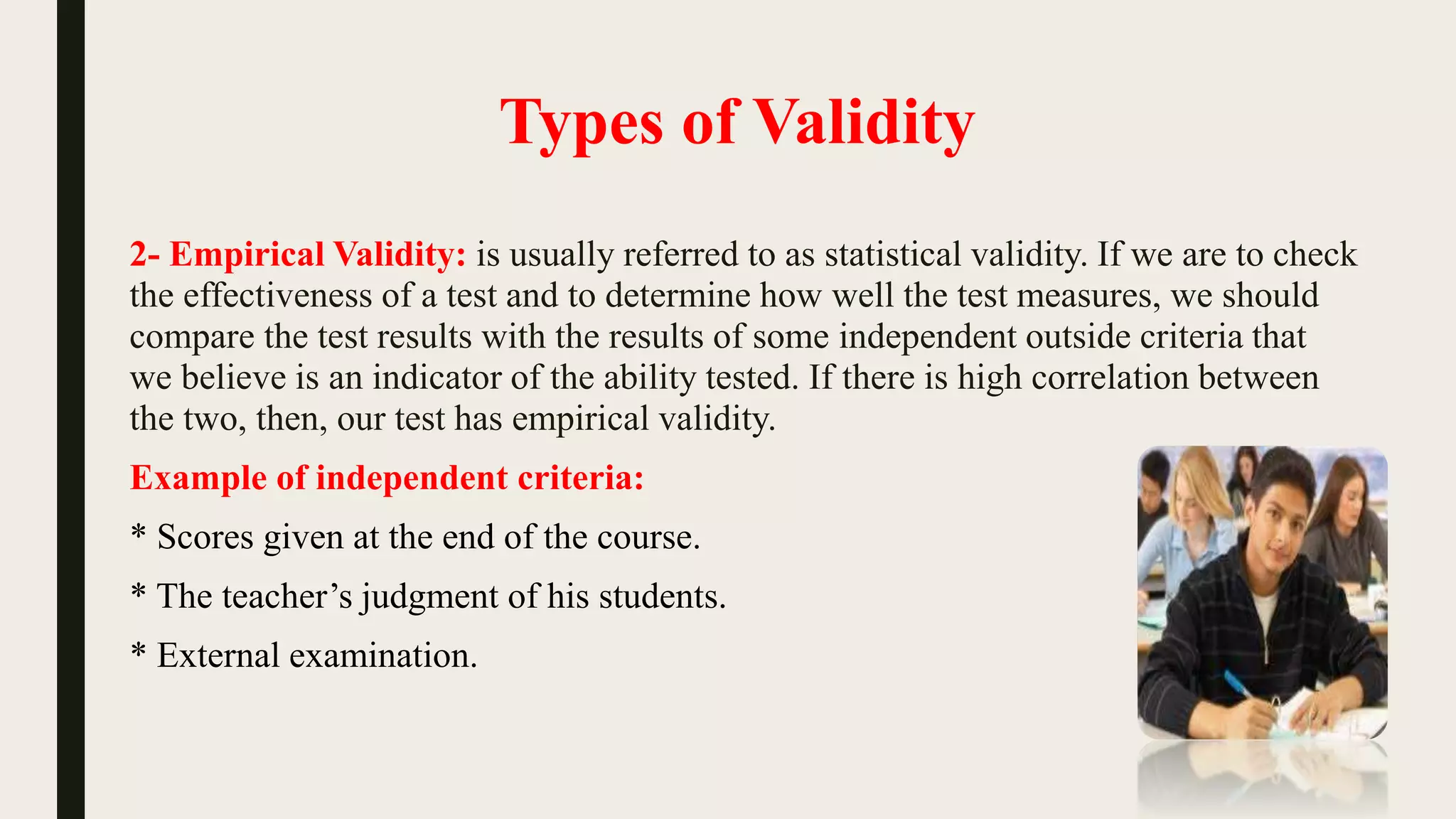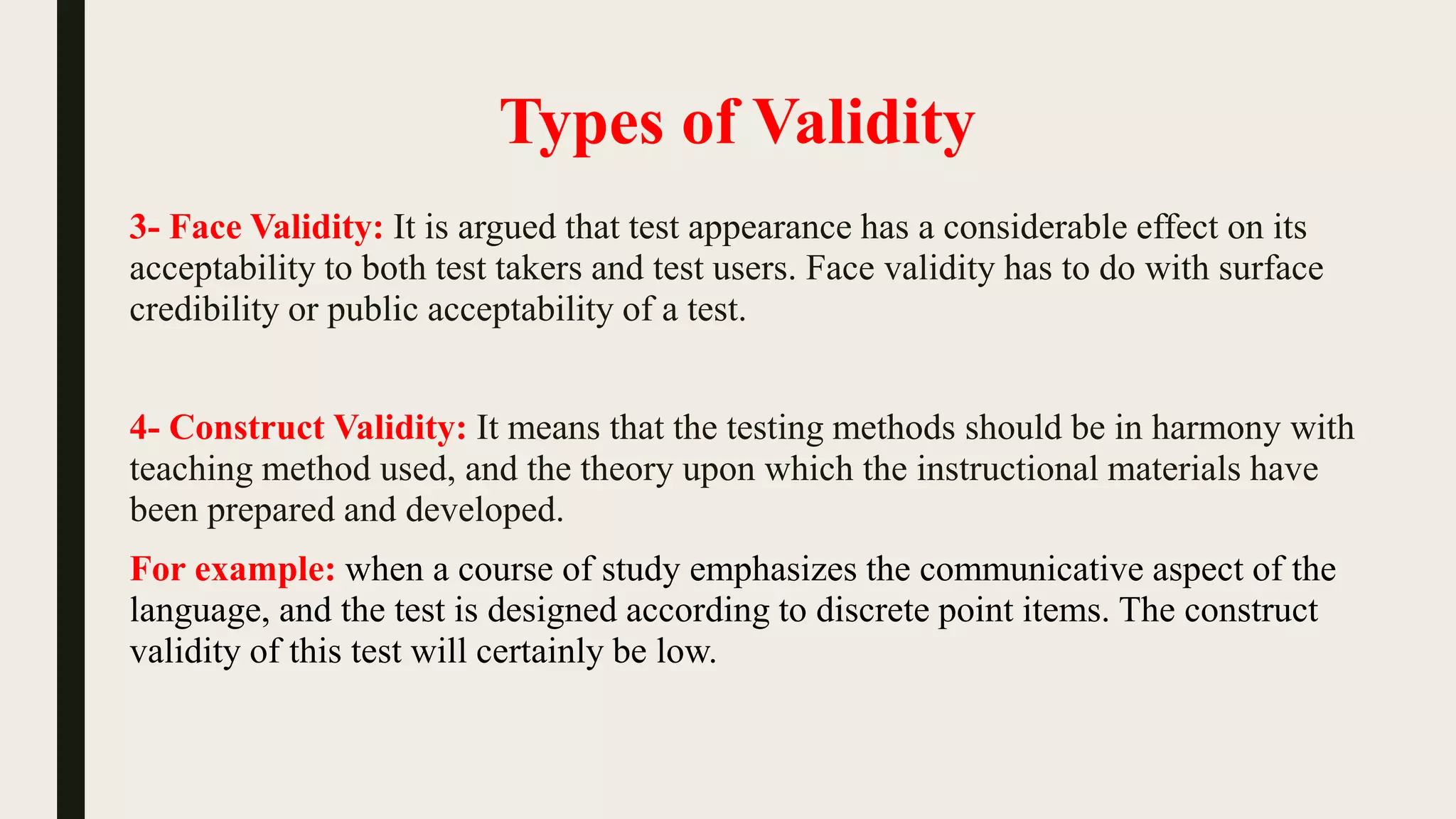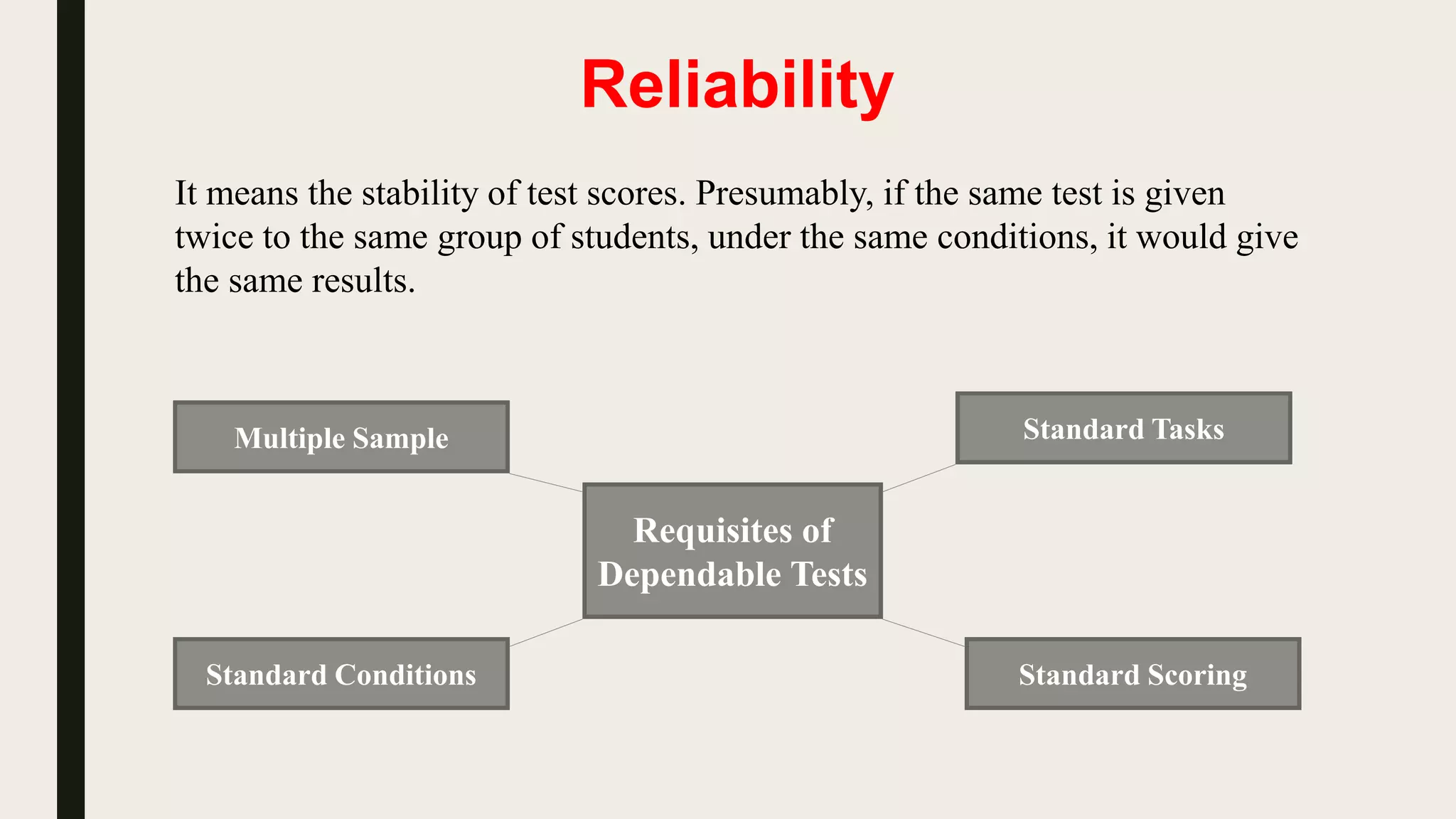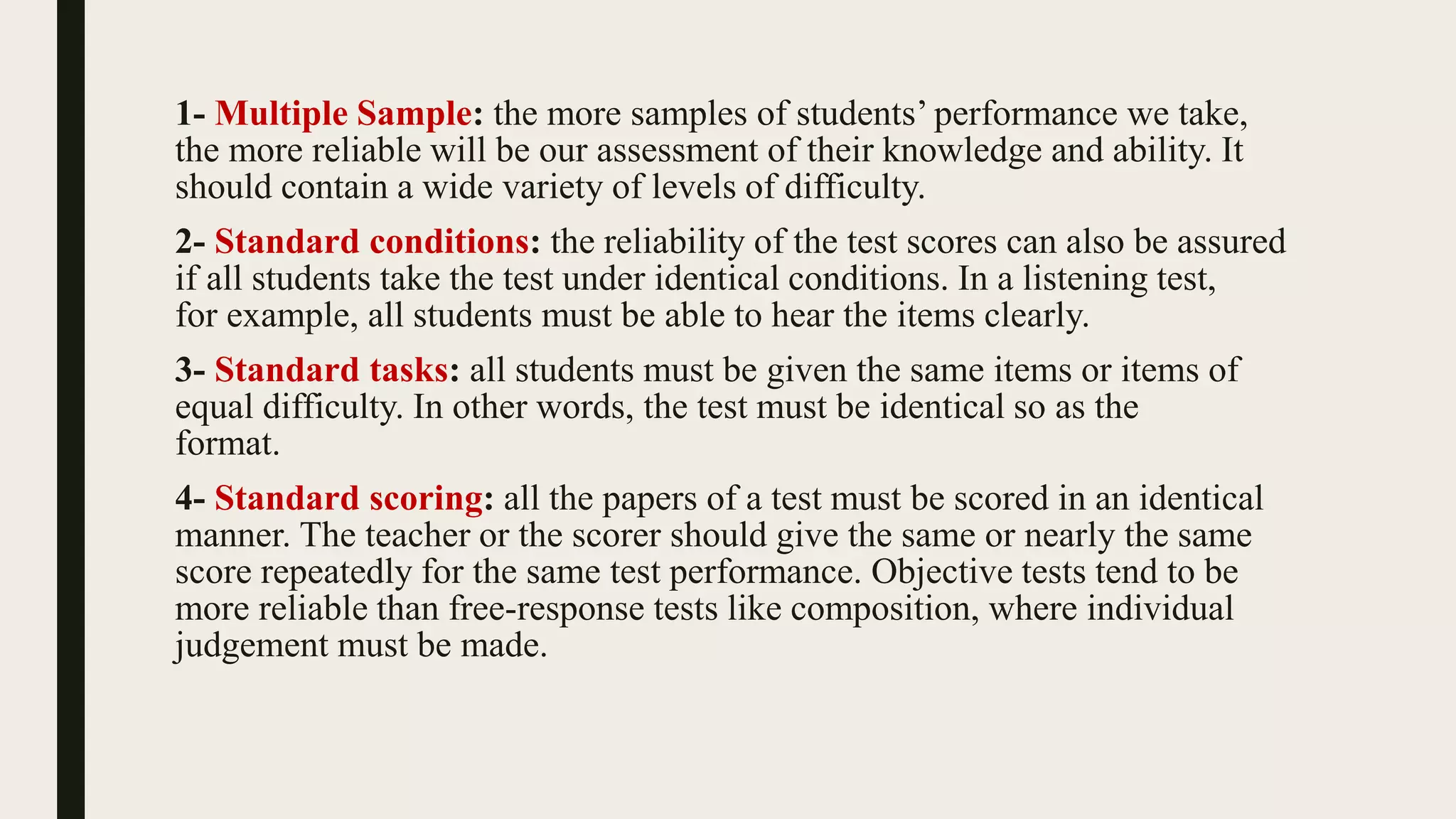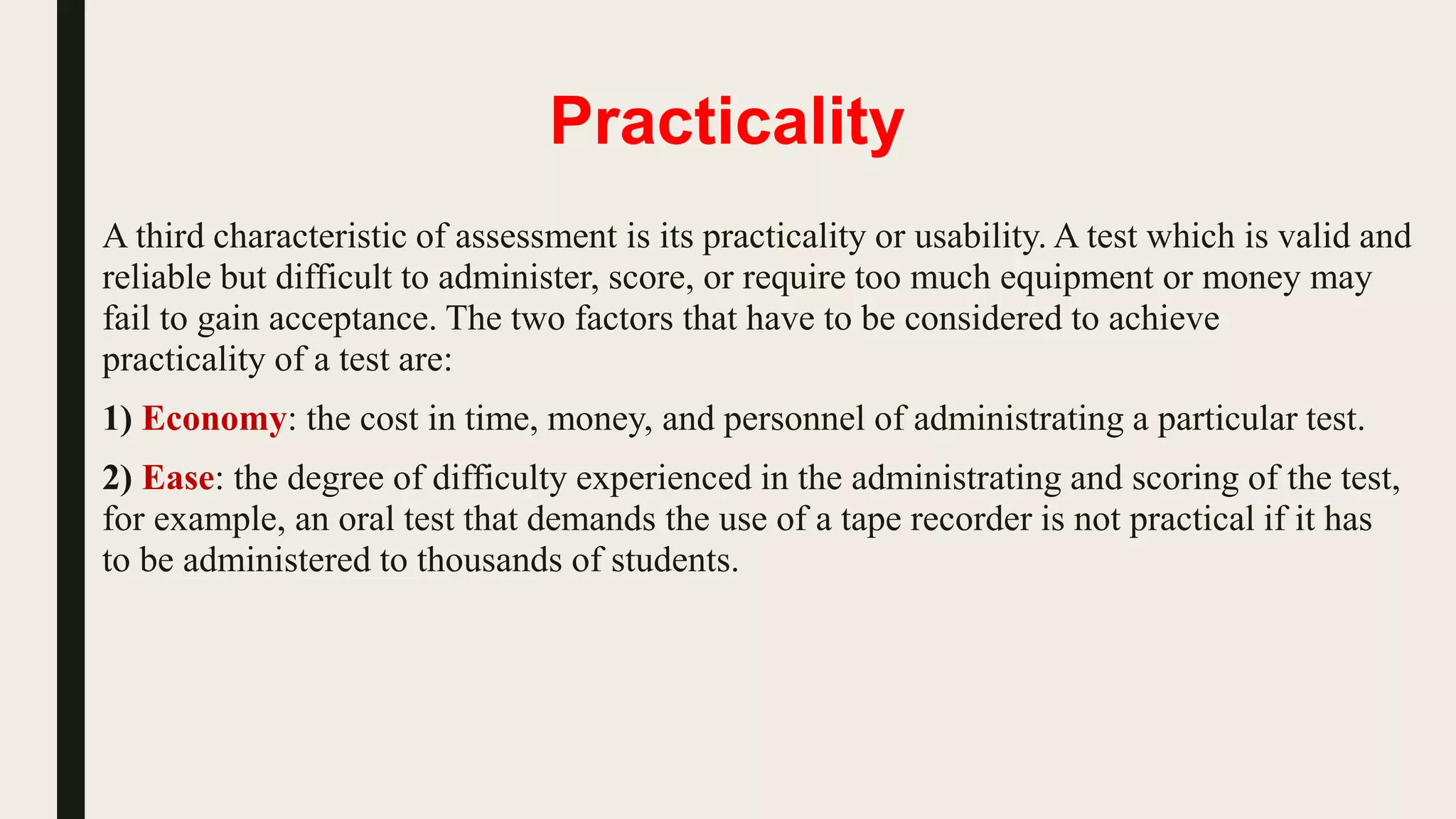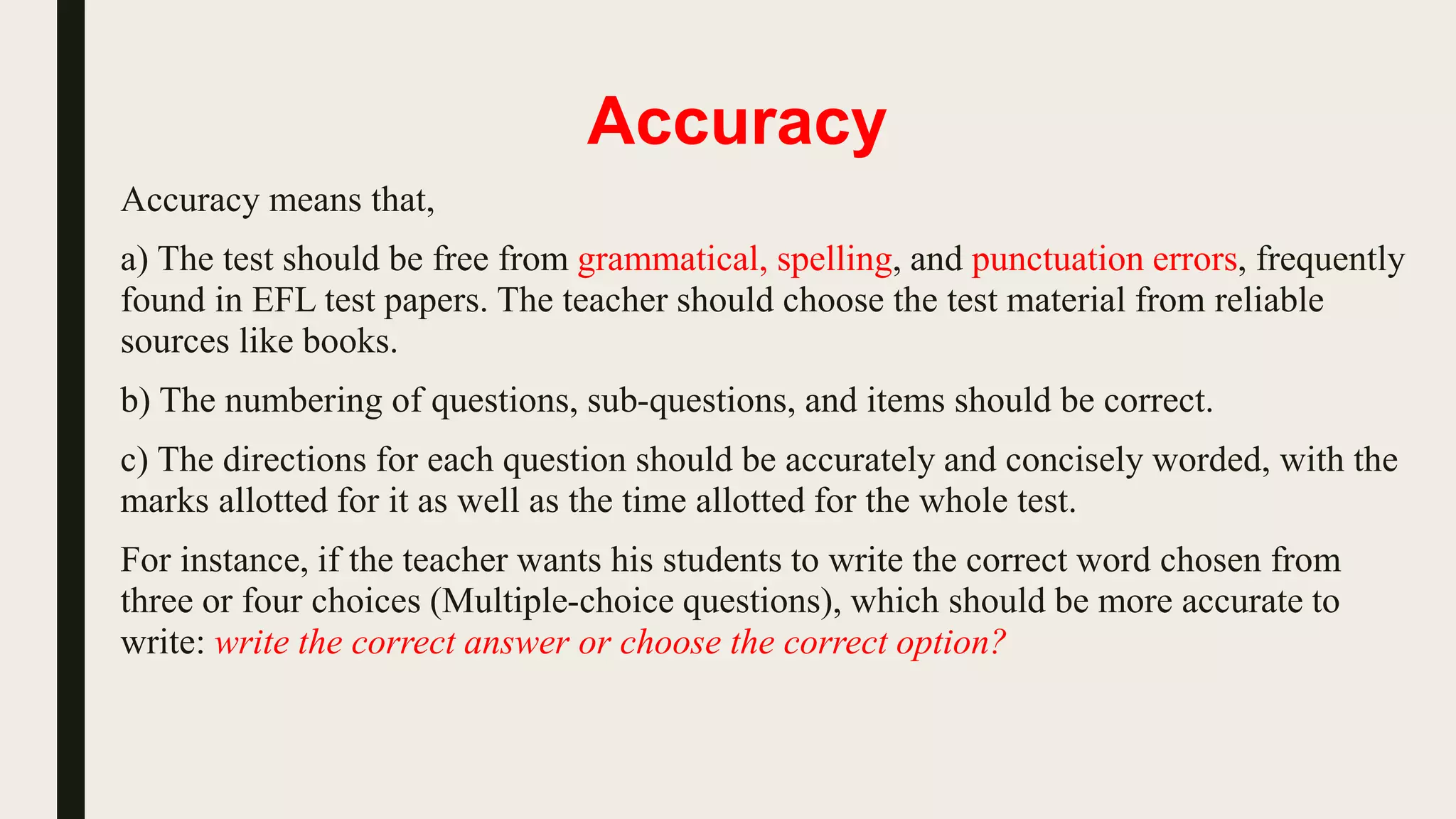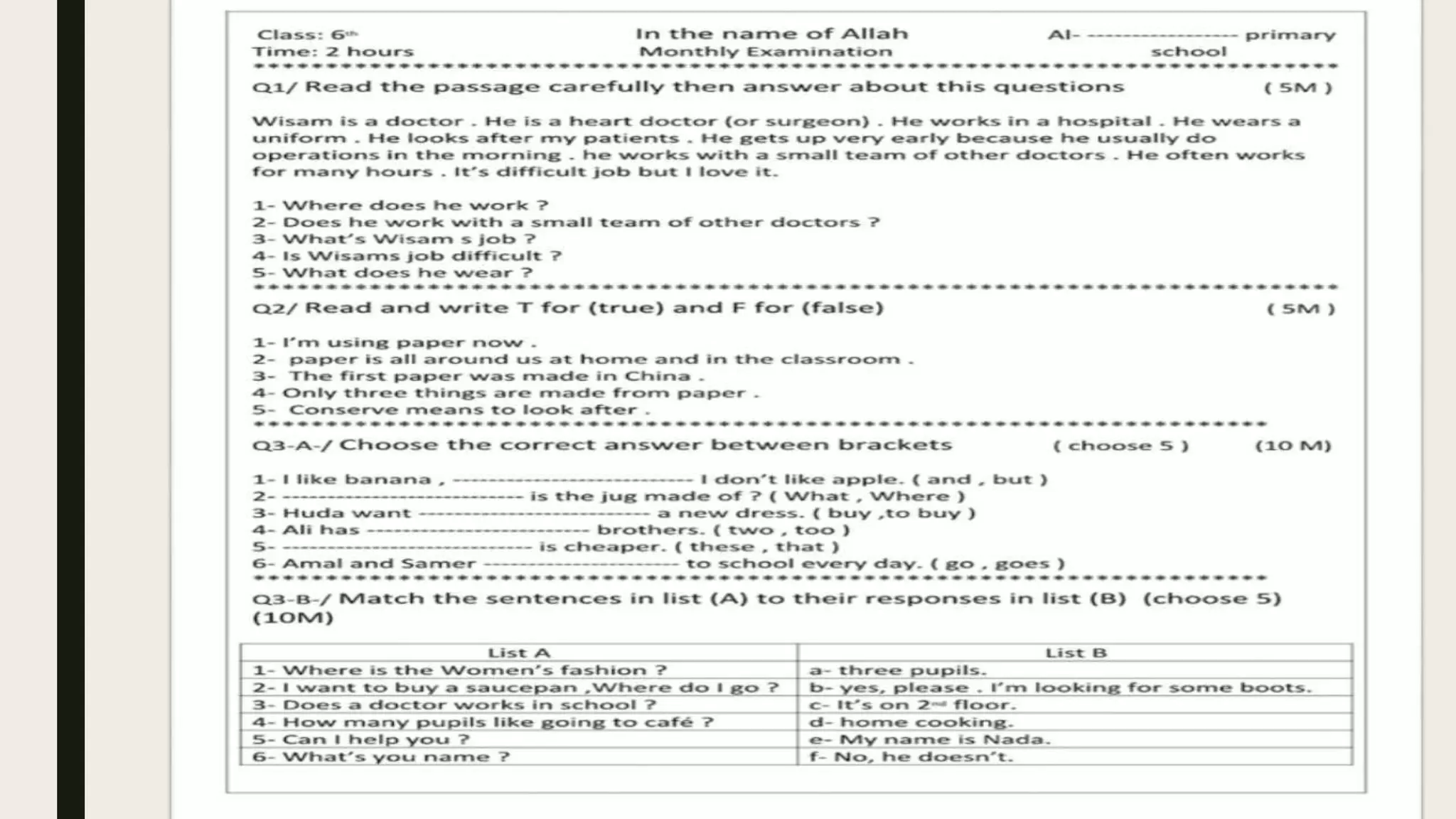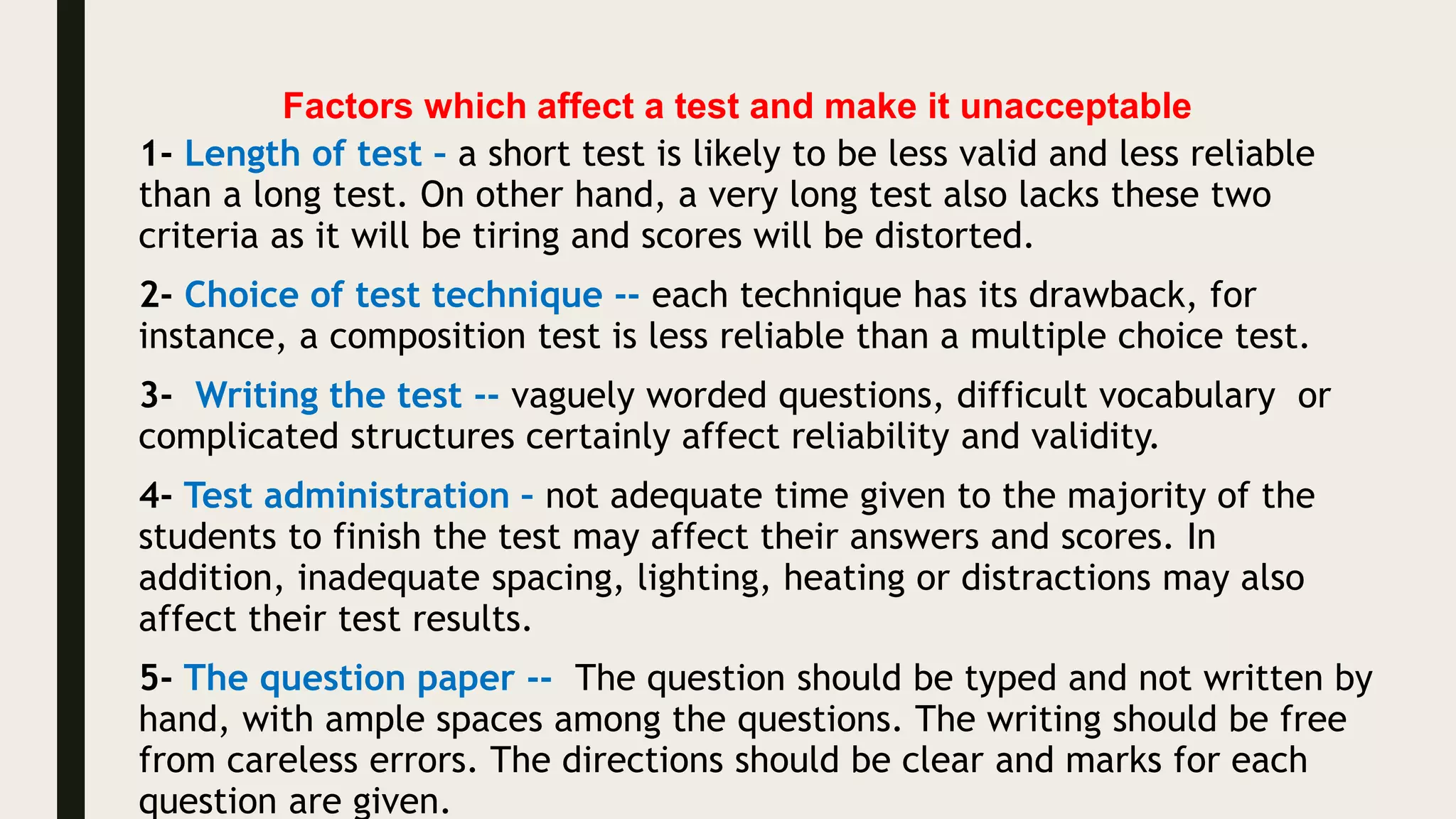This document discusses the key characteristics of effective assessment: validity, reliability, practicality, and accuracy. It defines each characteristic and provides examples. Validity means a test measures what it intends to measure. Reliability means a test produces consistent results. Practicality means a test is usable in terms of time and cost. Accuracy means a test is free from errors. The document also discusses factors that affect the acceptability of a test like length, technique, administration conditions, and presentation quality. Overall, the document provides an overview of the essential features of assessment and testing.
